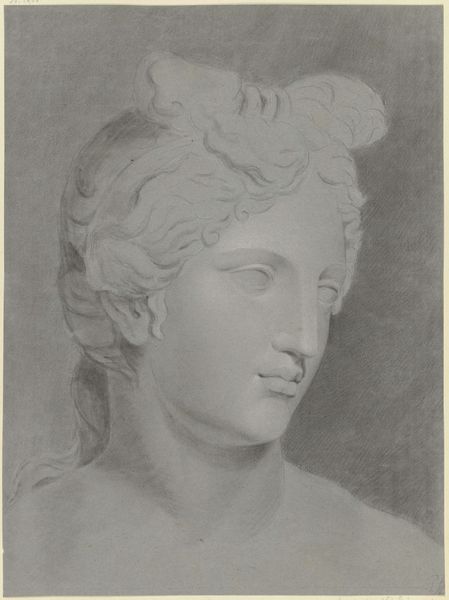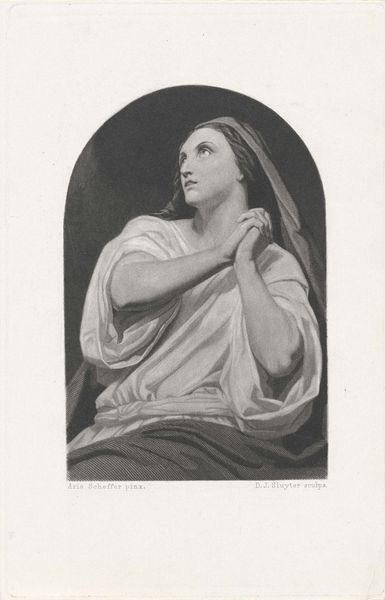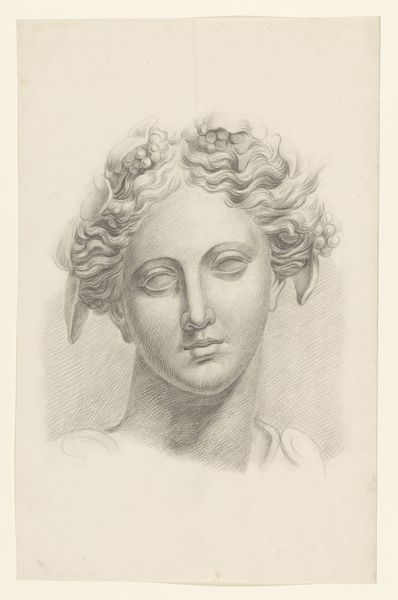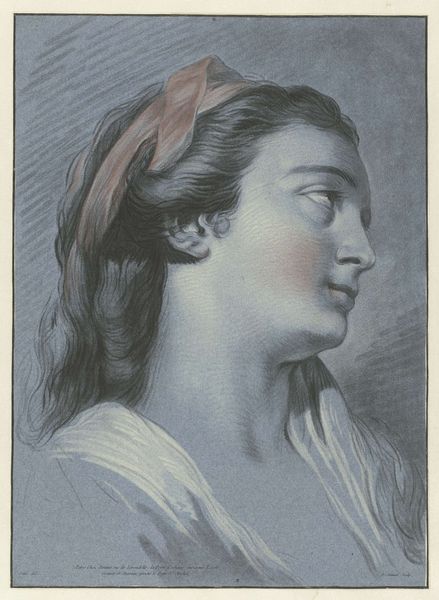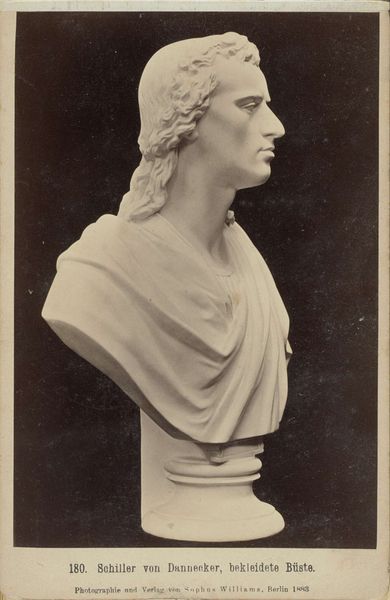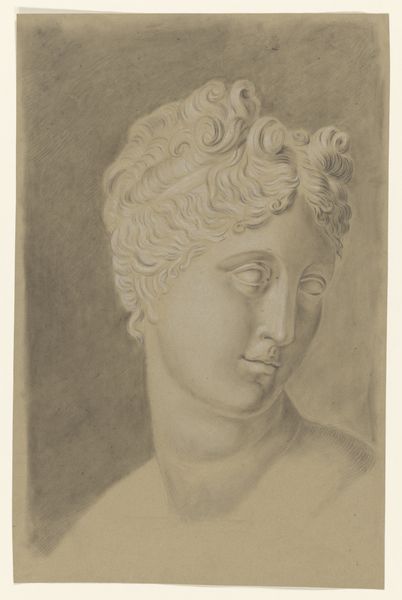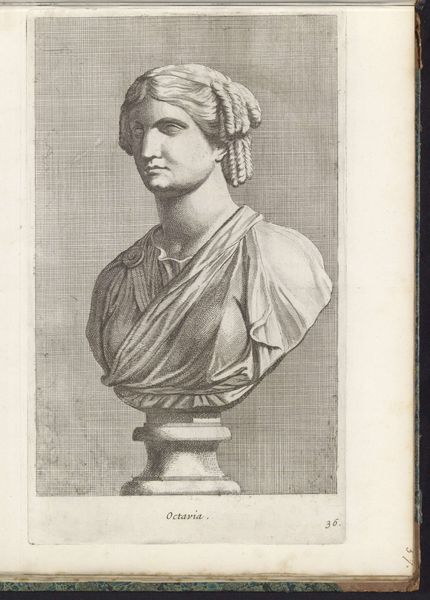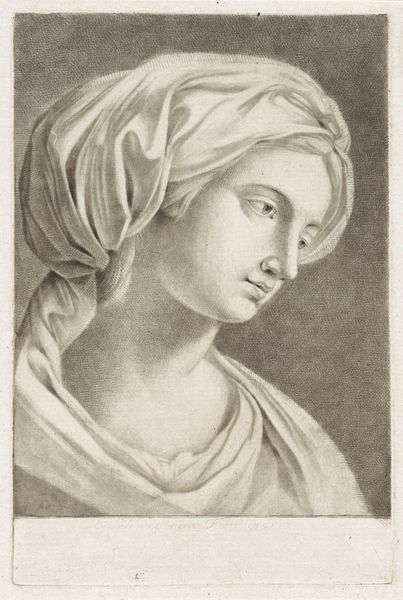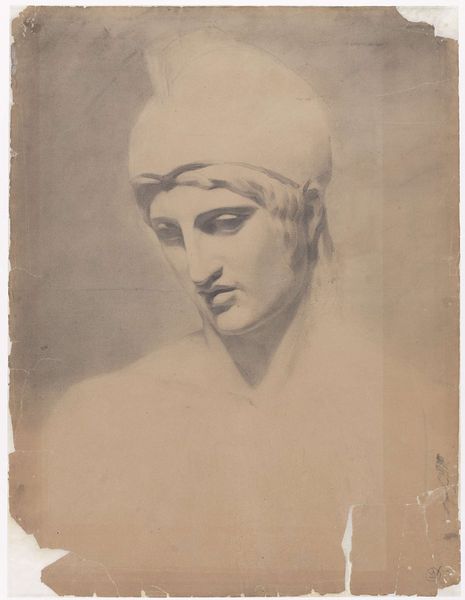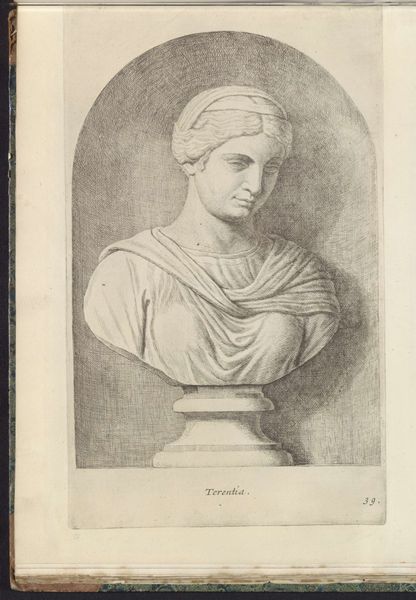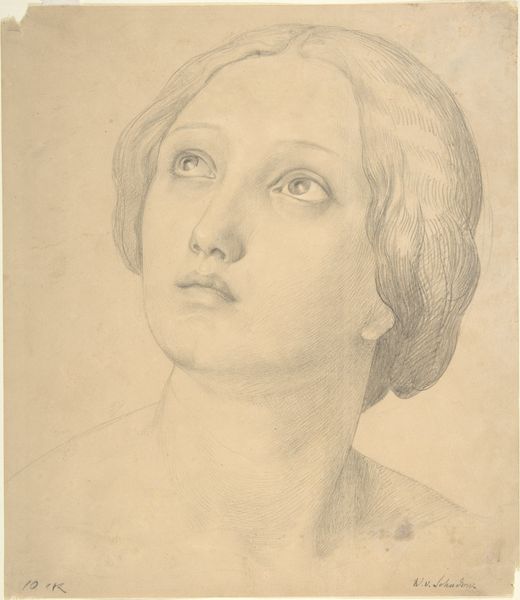
drawing, pencil, chalk, charcoal
#
portrait
#
drawing
#
neoclassicism
#
charcoal drawing
#
figuration
#
form
#
pencil drawing
#
ancient-mediterranean
#
pencil
#
chalk
#
portrait drawing
#
charcoal
#
academic-art
Copyright: Public Domain
Curator: This drawing, entitled "Niobekopf nach einem Gipsabguss," is by Franz Pforr and currently resides here at the Städel Museum. It is crafted using pencil, chalk, and charcoal. Editor: The first thing that strikes me is its ghostly quality, this pale head emerging from a darker ground. The artist really coaxes light from the materials. Curator: Indeed. Pforr was quite engaged with Neoclassicism and its relationship to ancient art. Niobe, in Greek mythology, is a figure associated with profound grief and suffering. Her children were killed by Apollo and Artemis, and she was turned to stone while weeping. Editor: So this is not simply a study in form but is pregnant with emotion, rendered visible through skillful handling of earth-based media: charcoal, chalk. We must also think about the labor involved in producing charcoal from wood, grounding chalk from stone to produce an image of Niobe. Curator: Yes, and the act of copying from a plaster cast, very common within the academic tradition of the time, raises questions about artistic originality and the role of institutions in shaping artistic practice. Artists often visited museums to sketch these statues as an important element of training. Editor: Absolutely. These plaster casts, once so prevalent in studios and academies, facilitated a sort of democratization of classical forms. Though, the distance from the original source meant that new meaning was generated, perhaps reflecting the aspirations of the growing middle class. Curator: It brings to mind how societal norms and power structures influence art creation and its meaning. Who had access to this idealized version of beauty? Who was being excluded? Editor: Pforr really transforms the raw, the material, into an emotional presence, even if mediated through these historical processes and methods. A ghostly encounter with tragedy itself, grounded in the work. Curator: For me, seeing how Pforr grapples with this classical ideal underscores the complex role that tradition and societal expectations played in artistic creation during that period. Editor: And, it really emphasizes how the materials and methods themselves become integral to our interpretation and the layering of social histories within a drawing.
Comments
No comments
Be the first to comment and join the conversation on the ultimate creative platform.
